Living in the beautiful coastal community of Flagler County, Florida, comes with its fair share of perks, but it also means being prepared for the potential impact of hurricanes. As hurricane season approaches, it’s crucial to not only secure your home but also to take measures to protect your landscape. By planning ahead and following some essential steps, you can minimize potential damage and ensure the safety of your outdoor space. In this blog, we’ll guide you through the process of getting your landscape ready for a hurricane in Flagler County.
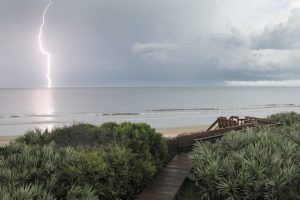
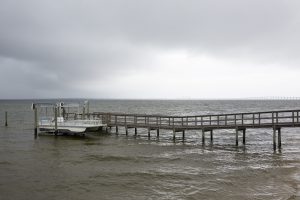
Evaluate Your Landscape
Start by assessing your landscape’s vulnerabilities. Identify weak or dead trees, loose branches, and other potential hazards that could be exacerbated by strong winds. Remove dead trees and trim branches to prevent them from becoming projectiles during the storm.
Anchor Outdoor Items
Secure outdoor furniture, décor, and other items that could become projectiles in strong winds. Move lightweight objects indoors, and use anchors or tie-downs for larger items like patio furniture, grills, and potted plants.
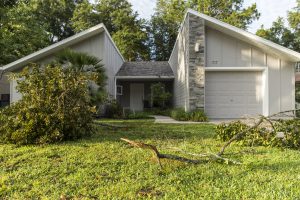
Prune and Maintain
Regular maintenance can prevent excess damage during a hurricane. Keep trees and shrubs properly pruned to reduce their wind resistance. Remove weak or overhanging branches that could break and cause damage.
Reinforce Structures
Inspect your fences, trellises, and other landscape structures for signs of weakness. Reinforce these structures as needed to prevent them from collapsing during the storm.
Trim and Secure Roof Vegetation
If you have vegetation on your roof, such as vines or potted plants, trim them back to minimize the risk of damage to your roofing materials. Secure any loose items on the roof to prevent them from being lifted by strong winds.
Turn Off Irrigation Systems
Before the storm arrives, turn off your irrigation system. Excessive water can saturate the soil and potentially uproot plants during the storm.
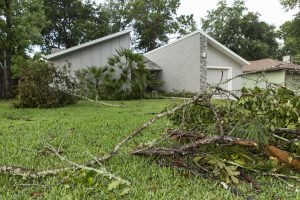
Document Your Landscape
Before the hurricane hits, take photographs or videos of your landscape. This documentation can be valuable for insurance purposes in case your property sustains damage.
Preparing your landscape for a hurricane in Flagler County, FL, is a crucial part of overall hurricane readiness. By evaluating potential hazards, choosing resilient plants, securing outdoor items, and implementing storm-resistant features, you can significantly reduce the risk of damage to your outdoor space. Remember, safety should always come first, so follow official guidelines and evacuation orders if necessary. By taking proactive measures, you’ll be better equipped to face the challenges of hurricane season and protect your cherished landscape. For additional insights into readying your landscape for a hurricane or restoring it after a hurricane’s impact, feel free to explore further.
Additional Resources:
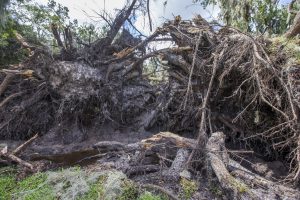
- The Neighborhood Gardener: Hurricane Landscaping
- Hurricane-Damaged Palms in the Landscape: Care after the Storm
- Hurricanes and Mosquitoes
- Prepare Your Forest Property For Hurricane Season
- Lightning Damage to Landscape Palms
- Hurricane Preparation: Evacuating Your Home
For current and emerging UF/IFAS disaster news and information, please see http://disaster.ifas.ufl.edu.
Source: UF/IFAS Pest Alert
Note: All images and contents are the property of UF/IFAS.



